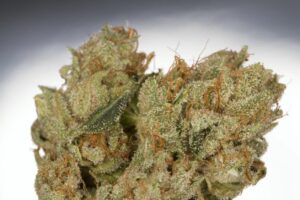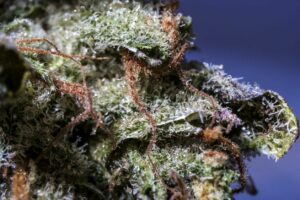Those of us familiar with cannabis know that it’s not a one-size-fits-all kind of plant. One person may find relief from a high cannabidiol (CBD) tincture, while another may do better with one that has a little THC in the mix. This is because everyone’s different—or rather, each one of us has a unique endocannabinoid tone.
When this tone becomes imbalanced, health problems can arise. But there may be ways to fix this imbalance.
FOLLOW US ON FACEBOOK & INSTAGRAM
Endocannabinoid Tone Describes the Overall State of Your Endocannabinoid System
Within each of us is a network of receptors that cannabis acts on to bring about its therapeutic effects. This network is called the endocannabinoid system (ECS), and it’s made up of many different components. In a nutshell, these components are:
- Receptors: CB1 and CB2 are the most well studied
- Endocannabinoids: anandamide (AEA) and 2-arachidonoylglycerol (2AG), which are made by your body and attach to CB1 and CB2 receptors
- Enzymes: FAAH and MAGL, which break down AEA and 2AG
Your endocannabinoid tone is a reflection of how all of these components act together to bring about balance within your system. This tone also encompasses the levels of endocannabinoids in your body, the rate at which they’re made and broken down, as well as the density of receptors in your brain.
What Happens When Your Endocannabinoid Tone Isn’t Balanced?
The endocannabinoid system is all about maintaining balance, or homeostasis, in the body. Given that the ECS plays a role in many key life processes like sleep, mood and memory, it’s no surprise that when your endocannabinoid tone becomes imbalanced, many issues can occur.
An underactive ECS is also called clinical endocannabinoid deficiency.
It’s thought that if endocannabinoid tone is low, you’re more likely to have a lower pain threshold as well as problems with mood, sleep and digestion. Some conditions that are associated with clinical endocannabinoid deficiency are:
- Migraines
- Fibromyalgia
- Irritable bowel syndrome
- Dysmenorrhea
- PTSD
- Bipolar disorder
On the other hand, an overactive ECS is associated with conditions like:
- Obesity
- Diabetes
It’s possible that evening out endocannabinoid tone can offer a solution to many of these conditions.
Lots of Things We Do Can Alter Endocannabinoid Tone
Although we still don’t fully understand the workings of the ECS, we do know that certain medicines, therapies and lifestyle choices can influence it.
For example, in preclinical studies, nonsteroidal anti-inflammatory drugs (NSAIDs) and small doses of opiates can enhance endocannabinoid tone, while chronic doses of some steroids can actually decrease it.
Lifestyle choices like exercise and stress management can affect the ECS, too. Overall, high-intensity exercise tends to boost anandamide levels (and therefore endocannabinoid tone), while chronic stress tends to decrease it. Even alternative healing modalities like acupuncture and massage affect the endocannabinoid system in some way.
Cannabis Can Influence Our Endocannabinoid Tone
And of course, one obvious way to alter endocannabinoid tone is with the consumption of cannabis.
CBD for instance, has been known to prevent the breakdown of the enzyme FAAH, and THC can attach directly to CB1 receptors. Both of these actions enhance endocannabinoid tone. This could be one of the reasons why some people have success with taking cannabis to relieve conditions that are associated with low endocannabinoid tone.
But cannabis can also be effective in helping folks who have conditions that are associated with an overactive ECS. This highlights how much more we need to learn about how cannabis affects our bodies.
We’re a long way off from figuring out how to alter endocannabinoid tone to our benefit. Most of the studies that have been done are preclinical. However, they do show that our everyday actions can impact our ECS. With continued research, we’ll be able to develop holistic therapies that can help folks manage these hard-to-treat conditions—and cannabis in some form, will likely play a role.
Photo credit: GMB Monkey
If you’re new to cannabis and want to learn more, take a look at our Cannabis 101 index of articles. And if you have questions about cannabis visit our community will answer.






